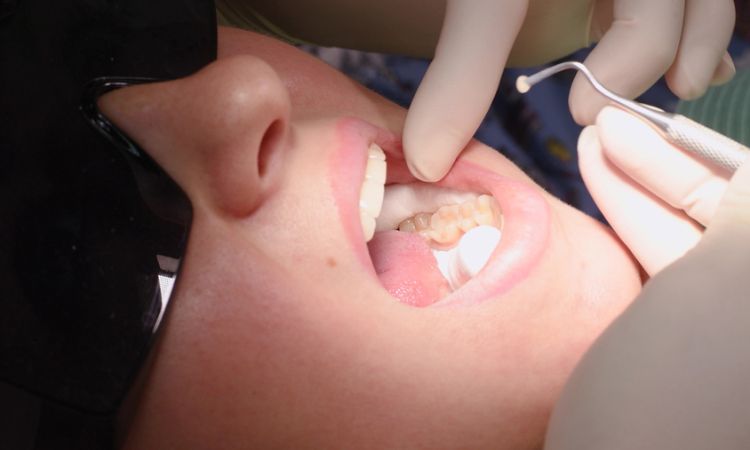Dental fillings are essential for restoring damaged teeth, but some individuals may experience unexpected allergic reactions, particularly to composite fillings. If you suspect you have an allergy to your dental filling, understanding the signs and symptoms can help you take the right action. Here’s what you need to know.
Understanding Composite Fillings and Their Ingredients
Composite fillings are a popular choice for dental restorations because they offer a natural look and durability. They are typically made of:
- Resin-based materials
- Silica fillers
- Acrylic compounds
- Photoinitiators for curing
Although these materials are biocompatible for most people, some individuals may develop sensitivities or allergic reactions.
Signs of an Allergic Reaction to Composite Fillings
While allergies to composite fillings are rare, they can still occur. Symptoms may appear within hours or days after the filling procedure. Common signs include:
1. Persistent Tooth Sensitivity
If you experience a sensitive tooth after filling, particularly when consuming hot or cold foods, it may indicate irritation or an allergic response.
2. Gum Inflammation and Redness
Swelling, tenderness, or redness in the gums surrounding the filling may suggest an adverse reaction to the material.
3. Burning Sensation or Pain
Some patients report a burning feeling in their mouth or discomfort that doesn’t subside after a few days.
4. Skin Reactions
In severe cases, allergic reactions may extend beyond the mouth, leading to itching, rashes, or swelling on the face or lips.
5. Dry Mouth or Unusual Taste
A constant dry mouth or a metallic/bitter taste could also be signs of a mild allergic response to the filling material.
How to Confirm a Composite Filling Allergy
When you suspect an allergic reaction, it is essential to proceed with the following steps:
1. Monitor Symptoms Closely
Keep track of when the symptoms started and how they progressed.
2. Consult a Dentist
A dental professional at Cosmo Smiles Dental can evaluate the reaction, check for improper placement, and rule out other causes of discomfort.
3. Allergy Testing
In cases of suspected allergies, your dentist may refer you to an allergist for patch testing to determine if you have a reaction to any components in the filling material.
4. Consider Alternative Fillings
If an allergy is confirmed, your dentist may recommend switching to alternative materials such as:
- Ceramic fillings (porcelain-based)
- Gold or amalgam fillings (for non-allergic patients)
- Glass ionomer fillings (fluoride-releasing options)
Managing Sensitivity and Allergic Reactions
If you’re dealing with tooth sensitivity, or suspect an allergic reaction, try these steps for relief:
1. Use a Desensitizing Toothpaste
Specialized toothpaste for individuals with sensitive teeth may assist in minimizing discomfort.
2. Avoid Hot and Cold Foods
Extreme temperatures can aggravate sensitivity, so opt for lukewarm foods and drinks.
3. Rinse with Salt Water
A gentle saltwater rinse can help reduce inflammation and promote healing.
4. Take Over-the-Counter Pain Relievers
Non-prescription anti-inflammatory medications can ease discomfort until you see a dentist.
5. Discuss Replacement Options with Your Dentist
If symptoms persist, replacing the filling with a more biocompatible material may be the best solution.
Final Thoughts
Experiencing a sensitive tooth after filling or signs of an allergic reaction should not be ignored. While allergies to composite fillings are uncommon, it’s essential to recognize the symptoms and seek professional advice. If you suspect an issue with your dental filling, consult your dentist at Cosmo Smiles Dental to explore safer alternatives and long-term solutions for your oral health.
FAQs
1. How common are allergies to composite fillings?
Allergic reactions to composite fillings are rare, affecting a small percentage of patients.
2. Can composite fillings cause long-term health issues?
For most people, composite fillings are safe. However, if you have an allergy, prolonged exposure may lead to chronic inflammation or discomfort.
3. What is the best alternative for someone allergic to composite fillings?
Porcelain, gold, and glass ionomer fillings are excellent alternatives if you have sensitivity or allergies.
4. How soon do allergic reactions to fillings appear?
Symptoms may appear within hours to a few days after the procedure.
5. Will replacing my filling stop the allergic reaction?
Yes, removing and replacing the allergenic material should eliminate symptoms once the body no longer reacts to the filling.
